If your New Year’s resolutions have you thinking about healthier eating habits, we have a suggestion: start with small, manageable goals that you can implement for the whole family. One easy place to start is by cutting back on white rice. Earlier this year, my family and I switched to these healthier substitutes for white rice, and we’ve not only felt a lot better, but the kids have barely noticed.
That said, I get that not every family will be amenable to the change — at least not at first. But if you start by using these ideas to substitute rice as an addition to soups, burritos, stir fries, and casseroles, these changes can be made without causing too many ripples around the dinner table. Give it a go and you might be surprised.
Related: Guide to healthy grains: 5 lesser-known, kid-friendly options beyond quinoa and rice.
1. Cauliflower rice
We eat cauliflower rice about once a week in my house, and it’s been our favorite substitute for white rice. (Give yourself a break and buy the frozen version at the grocery; it’s great.) When I’m using it for tacos, I add a little cumin and cayenne. When I use it to make a stir fry, I’ll throw in some soy sauce and minced ginger. And I can’t wait to whip up this amazing Dirty Cauliflower Rice recipe at Bites of Wellness to serve with some red beans and kielbasa.
With layers of flavor added, my kids barely notice the switch. And now that I’ve gotten used to it, I actually prefer cauliflower rice to white rice, because I feel so much lighter at the end of my meal.
By switching from white rice to cauliflower rice, you’re not only adding vitamins and minerals (yay vegetables!), you’re also saving yourself 193 calories and 41g of carbs per cup. Whoa.
2. Quinoa
Quinoa is an easy substitution for rice in any casserole, soup, or rice bowl and packs in way more protein. If your recipe calls for rice, just substitute the same amount of quinoa. It’s a smaller grain (technically a seed, but you know, who’s keeping track?), so the texture isn’t quite the same, but I like that it doesn’t add any unexpected flavor to a dish.
Yes, that’s right: I said that it doesn’t add any unexpected flavor, because it truly doesn’t if cooked correctly. When you use our tutorial for how to cook quinoa properly, you’ll end up with fluffy, mild, delicious quinoa that is not bitter or smoky. Read it, learn it, cook it. You’ll never turn back.
Switching from white rice to quinoa saves you around 40 calories and adds more essential fiber than rice, making your dish more filling. It also offers way more protein, which always seems to be a concern with parents.
Related: 5 clever ways to get kids excited about healthy eating before they get to the table.
3. Barley
If you aren’t a fan of the soft, fluffy texture of cooked quinoa, you might prefer using toothsome barley instead of rice. The shape of the grain is a bit closer to rice and it will give you a similar chewy texture. It’s also great if you have heart issues or are trying to lower your blood sugar. And because it doesn’t add a super strong flavor of it’s own, your kids won’t notice — or at least mind — finding barley in their soups or casseroles.
Barley has 6 grams of fiber (compared to 3g for brown rice and just 1g for white rice), as well as 3.5 grams of protein and 17-20 grams of calcium per cup.
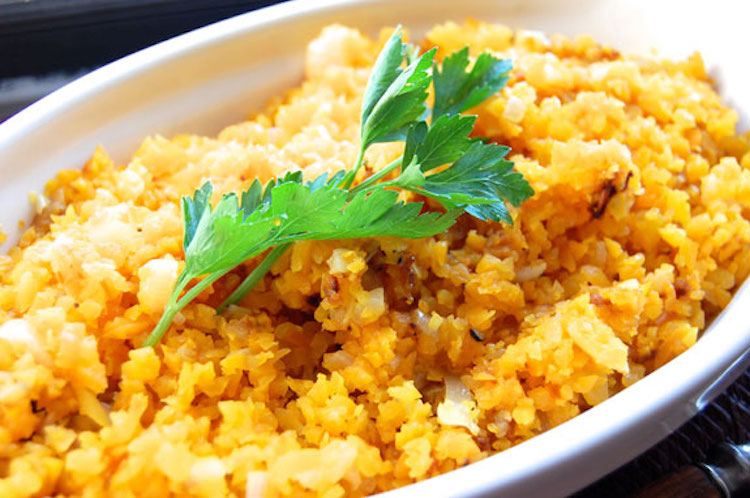
4. Butternut Squash
If you’re craving a big bowl of risotto, but are trying to cut back on carbs, try this recipe for Butternut Squash Risotto that I found at Paleo Grubs. The naturally creamy texture of squash makes it a great substitute for starchy aborio rice (which is a type of white rice).
Visually, this is quite a shift, but if you’re open to it (and by you, I mean the kids), this tastes delicious.
Butternut squash weighs in at just 82 calories and 22g carbs, compared to 169 calories and 37g carbs per cup of white rice. Plus, it packs in way more vitamins and minerals because it’s a veggie!
Related: Superfoods for babies and toddlers: the 10 best foods for your beginner eater.
5. Brown or red rice
White rice has been milled to remove both the outer husk and bran from the grain, but brown rice has only had the husk removed. This makes it a whole grain, with a lot more fiber than white rice. And if you choose red rice, you’re adding iron and zinc to your meal too. They both take longer to cook than white rice, so plan accordingly.
For die hard white rice families, I’ve found that both brown and red rice are best cooked in casseroles like jambalaya and paella, where there’s a tons of liquid that cooks slowly, giving the rice plenty of time and opportunity to soak up tons of flavor.
You’ll save yourself about 30 calories and 8 carbs per cup of rice when you make the switch from white to brown.
Top photo by Kawin Harasai on Unsplash

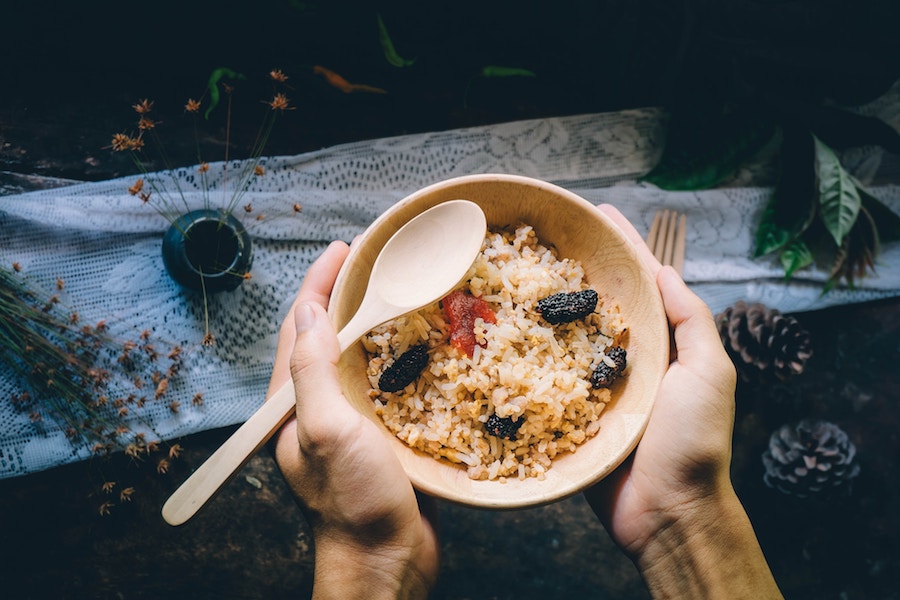
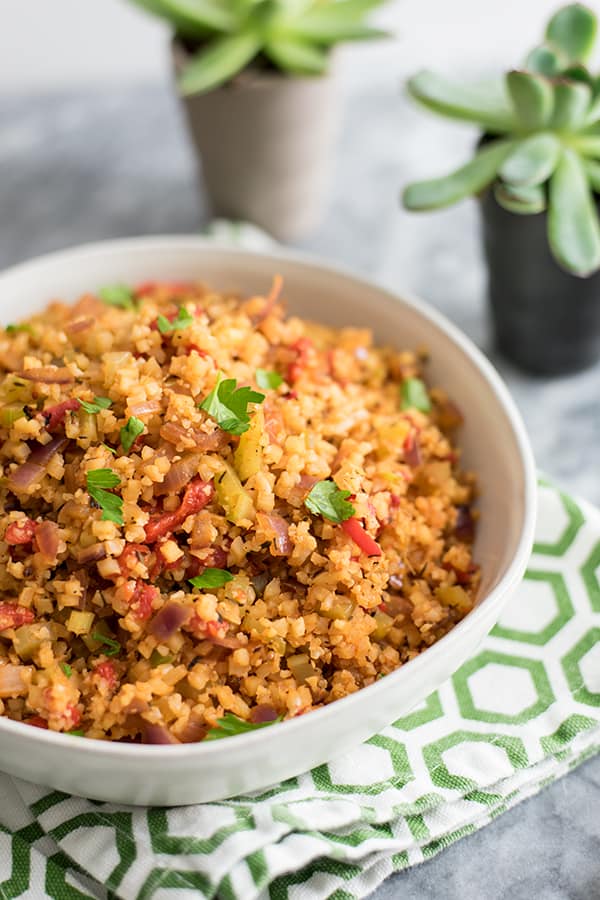
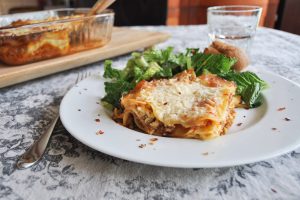
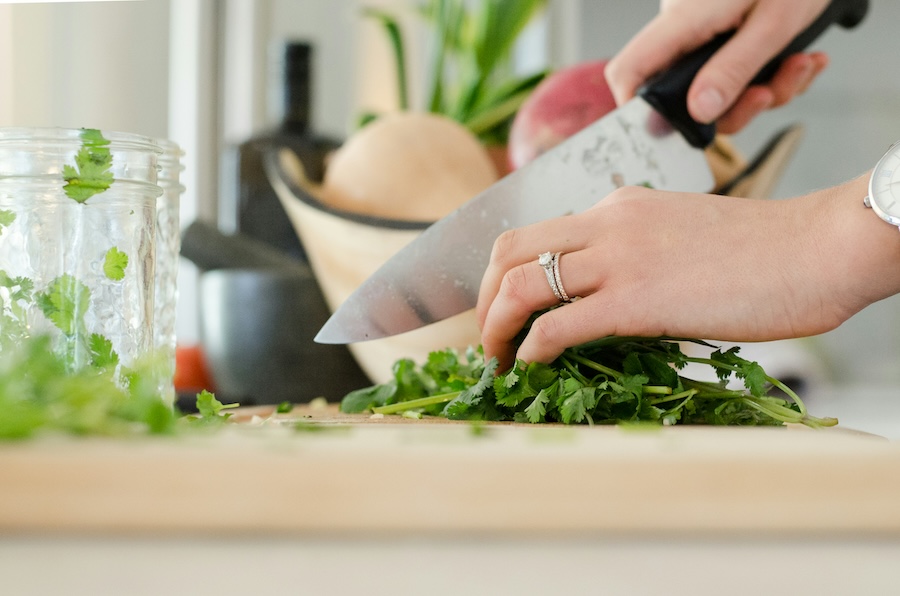


Great post. These are really better and tastier alternatives.
Hi Kate,
Thank You! The Alternatives you have specified are excellent. We always need not avoid rice in child’s diet completely but need to avoid simple refined forms like table sugars.
You could begin by substituting a small part of white rice with the exotic red rice which is power-packed with antioxidants and phytonutrients. I recently bought Organic Red Rice and included it in my child’s diet and he loved it. Red rice has its own innate nutty flavour which goes well with any recipe. My son likes the difference in color as well. Will try black rice soon!